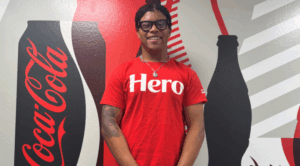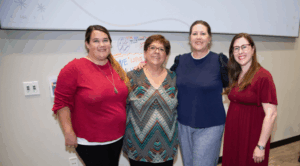Alumna Jamie Talley Pulling G’s
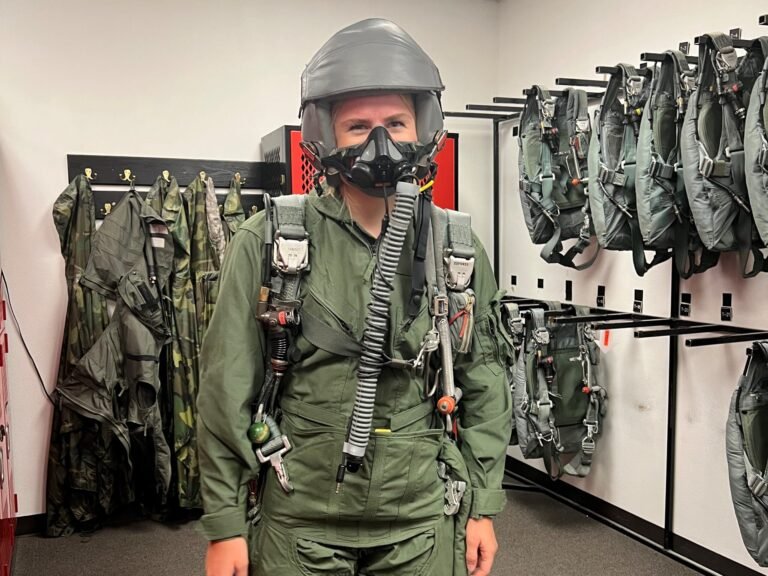
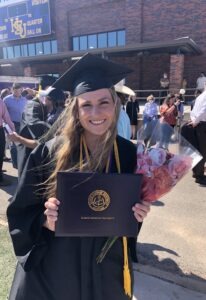
Jamie Tally’s graduation from HSU in 2021.
Jamie Talley graduated from Hardin-Simmons University in 2021 with a BHS in exercise science. While at HSU, Jamie ran track and field, was a cheerleader, and participated in the Honors Program. Prior to majoring in exercise science, Jamie was a biology major and is grateful for the experience both departments gave her. Her ability to diversify interests and hobbies has continued to benefit her with acceptance into Embry-Riddle Aeronautical University (ERAU) for graduate school, plus multiple research opportunities sponsored by the United States Air Force (USAF).
Jamie graduated in May with an M.S. degree in human factors from ERAU. When asked how she got involved with the USAF, Jamie said, “I spoke with a professor about how there were no physiology-based internships for human factors, only user experiences/technology related.” Her professor then reached out to the Aerospace Physiology Society, and Jamie was invited to intern at Beale Air Force Base (AFB) with the U2 Highflyer.
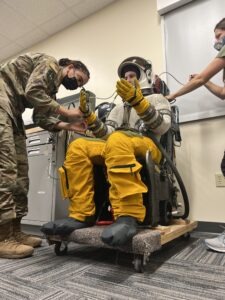
Alumna Jamie Talley ’21 in a G-Suit fitting at Beale AFB.
While at Beale AFB, Jamie assisted with unique research opportunities to better understand and equip flight surgeons and pilots. With other interns, she developed a training brief for deployed flight surgeons who were not familiar with the U2 Highflyer. “This plane flies 70,000+ feet high, so there are specific physiological episodes that could occur that might not be in other aircraft,” Jamie shared. “My focuses were primarily decompression sickness, heat stress, and radiation.”
Jamie also worked alongside the on-base exercise physiologist to build a training program intended to decrease the type of shoulder injury many technicians were getting due to the specific way they had to load survival kits onto the U2. Additionally, Jamie presented her research on decompression sickness (DCS) at the Aerospace Medical Association conference with her connections from Beale AFB.
Jamie believes it is the combination of her exercise science degree from HSU with the human factors degree from ERAU that made Beale AFB invite her to intern. She explained, “My degree combination is unique; most human factors students were previously psychology students. With both [exercise science and human factors], I believe I get a bigger picture of human physiology.”
I always tell them I studied human factors to understand the psychology behind our movements, but exercise science tells us how we do those movements.
Jamie went on to explain how HSU prepared her for her time at ERAU, giving her a bit of a leg up, saying, “Exercise science allowed me to understand human physiology in-depth. Since my interests are specifically aerospace physiology, I was able to take classes at ERAU that suited those interests. Because of my degree, those courses were relatively easier for me due to the knowledge I already had. Many human factors masters students were psychology majors in undergrad, so the physio courses were a bit more difficult to them.”
Her advice to current HSU students is to enjoy their time on campus because “it goes by fast.” She also encourages students to seek out summer internships to gain practical experience and network, reminding all that “many students get jobs offered out of their internship so they can go straight into the industry when they graduate.”

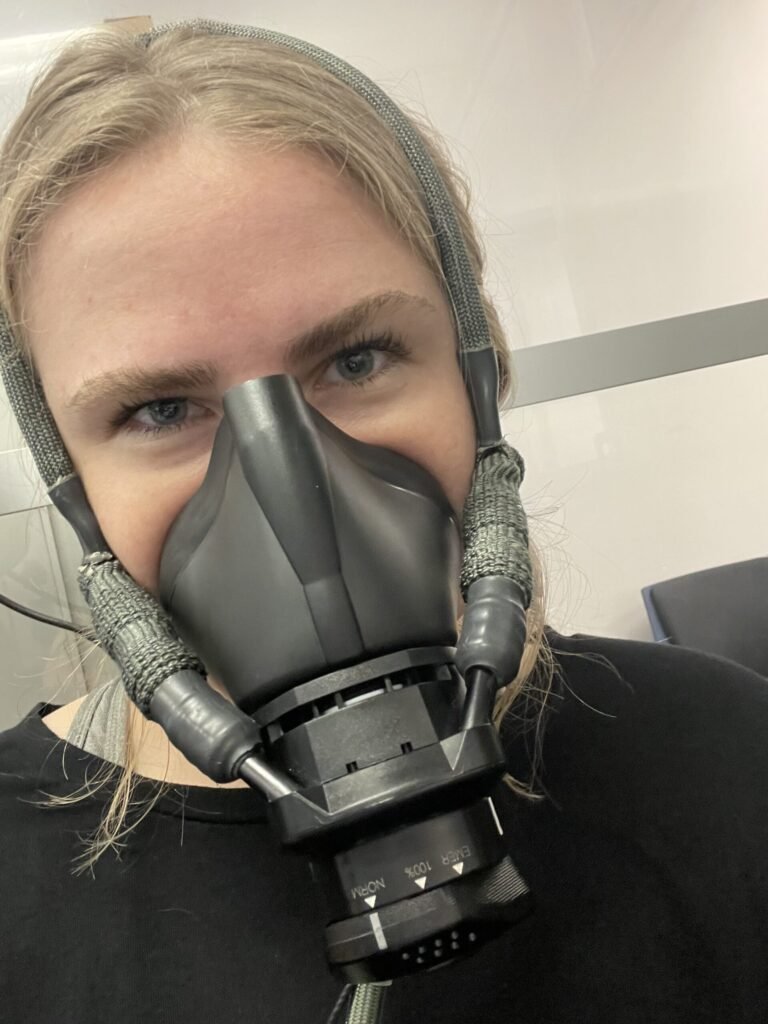
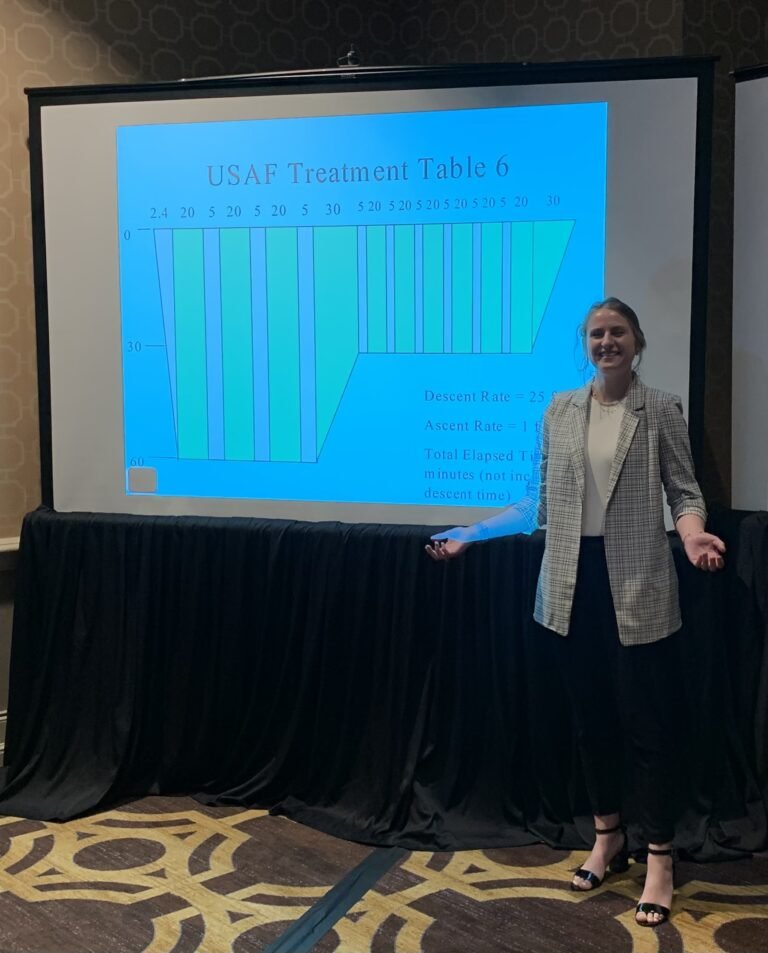
Additional research Jamie has been involved with at ERAU are studies on the effects of hypoxia and spatial disorientation, DCS, and a wristwatch study to track pilot sleep patterns.
- The hypoxia and spatial disorientation study will likely lower the altitude FAA requires supplemental oxygen.
- The decompression sickness research is to bring awareness to the differences between altitude DCS (aviation) and diving DCS (scuba diving)
- The wristwatch study is taking pilot safety into a new direction. Airline pilots place bids for flight hours and sometimes they will be flying multiple days in a row; however, regulations state that if a pilot has a certain number of hours off, he/she is safe to fly. The watches track the sleep of the pilot, and an equation will determine if the pilot has had enough rest to be fully alert.

